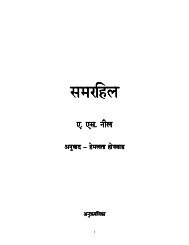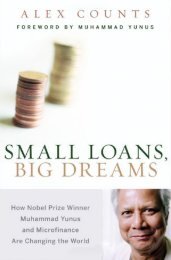Create successful ePaper yourself
Turn your PDF publications into a flip-book with our unique Google optimized e-Paper software.
AREAThe matchbox has three distinct surfaces: The labelled surface (1);the strike surface (2); and the drawer surface (3).Which surface is bigger, the labelled or the strike surface (1 or 2)?Why is (1) bigger than (2) when both of them share a common length ?Which is bigger the strike surface or the drawer surface (2 or 3) ?Why is (2) bigger than (3) when both share a common breadth ?How to find the area of the outer shell of a matchbox ?One way, of course, is to measure the length and the breadth andmultiply it. There is however, another interesting way of finding outthe area. Matchsticks have a square cross-section measuring2 mm x 2 mm. So, burnt matchsticks can be used as standardbricks for measurement of area. Pack burnt matchstick “bricks’ inthe outer shell of a matchbox to construct a wall. The area of eachstandard ‘brick’ is already known.By counting the total number of matchstick ‘bricks’ used, you canestimate the area of the matchbox shell.POST CARD 14-cm x 9-cmCut a postcard - 14-cm x 9-cm into one centimetre squares. Use these squares to estimate thearea of various shapes.Knock three short sticks into the ground andstretch a string around them to make a triangle.Now you are going to find out how big the triangleis.Arrange the post card unit squares in the triangleand count how many you need to fit in.Make other shapes with the sticks andstring to find out how many squarecentimetres you need to fill them.With nails or sticks and strings, mark out arectangle on the wall of your room or a walloutside. Count how many bricks are there in therectangle.


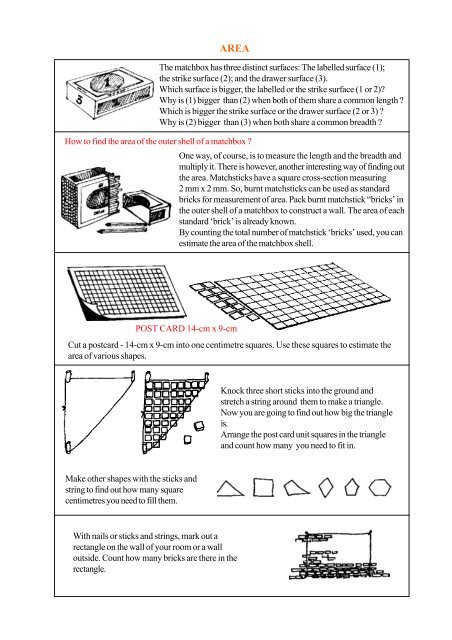
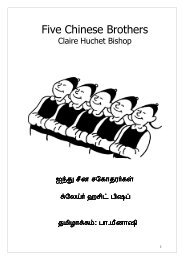
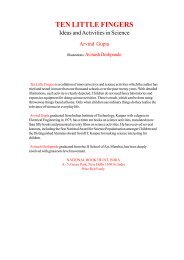
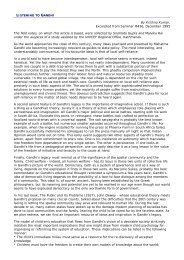
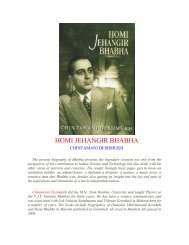

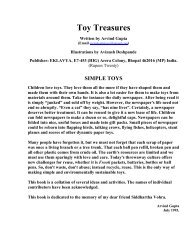
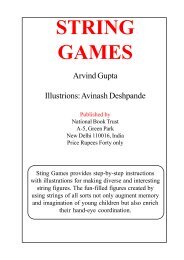

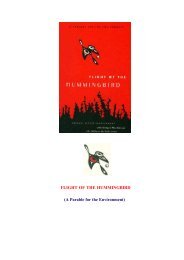
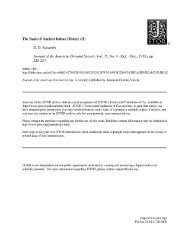
![tq,a] diM+s vkSj vk/qfud ekuo - Vidya Online](https://img.yumpu.com/31264147/1/190x245/tqa-dim-s-vksj-vk-qfud-ekuo-vidya-online.jpg?quality=85)
